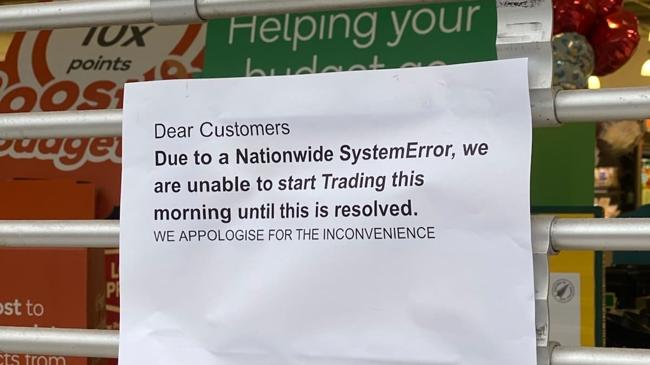Summary
Several Woolworths supermarkets were closed around the country after a glitch with electronic price tags this morning. A Woolworths spokesman said all shops were open by 8.30am. He told the Herald: We expect that the issue will be resolved quickly and the impact on our customers will be minimal.
Source: NZ Herald

AI News Q&A (Free Content)
Q1: What caused the temporary closure of Woolworths supermarkets across the country?
A1: Woolworths supermarkets were temporarily closed due to a glitch with their electronic pricing tags. This issue affected the electronic shelf labels across its network, displaying incorrect pricing information, which necessitated the temporary closure of the stores until the issue was resolved.
Q2: How did Woolworths handle the pricing issues during the glitch to minimize customer impact?
A2: Woolworths managed the pricing issues by ensuring that customers were charged the promotional prices at checkout, even though the electronic shelf labels were displaying standard prices. This approach helped in minimizing the impact on customers during the period of the glitch.
Q3: What are some technological innovations being implemented in supermarkets to enhance customer experience?
A3: Technological innovations in supermarkets include systems like SysMART, which aims to provide a smart and connected shopping experience. These systems use IoT and smart devices to streamline shopping, monitor perishable products, and provide features like remote inventory checks, traffic status, and distant parking availability to improve customer convenience.
Q4: What is the role of computer vision in modern retail technology, particularly in supermarkets?
A4: Computer vision plays a significant role in retail technology by enabling customer tracking and behavior analysis. This technology uses datasets collected from cameras to track customer movements and interactions within the supermarket, helping retailers understand shopping patterns and improve store layouts and customer service strategies.
Q5: How do smart supermarkets like SysMART contribute to the efficiency of grocery shopping?
A5: Smart supermarkets like SysMART contribute to shopping efficiency by integrating cutting-edge technologies that automate and simplify various aspects of grocery shopping. These include rapid data acquisition, real-time inventory tracking, and personalized shopping experiences, which collectively reduce the time and effort required for grocery shopping.
Q6: What are the potential benefits of implementing IoT solutions in supermarkets?
A6: Implementing IoT solutions in supermarkets offers numerous benefits, such as enhanced operational efficiency, real-time inventory management, improved customer engagement through personalized experiences, and better product quality management by monitoring perishable goods. These solutions also support modern lifestyle conveniences, contributing to a seamless shopping experience.
Q7: What measures can supermarkets take to avoid similar electronic pricing glitches in the future?
A7: To avoid similar electronic pricing glitches, supermarkets can implement robust IT infrastructure with regular system maintenance and updates. Employing backup systems and real-time monitoring can also help detect and address issues promptly, while staff training ensures quick response times to minimize disruptions.
References:
- Towards in-store multi-person tracking using head detection and track heatmaps
- SysMART Indoor Services: A System of Smart and Connected Supermarkets
- SysMART Outdoor Services: A System of Connected and Smart Supermarkets





